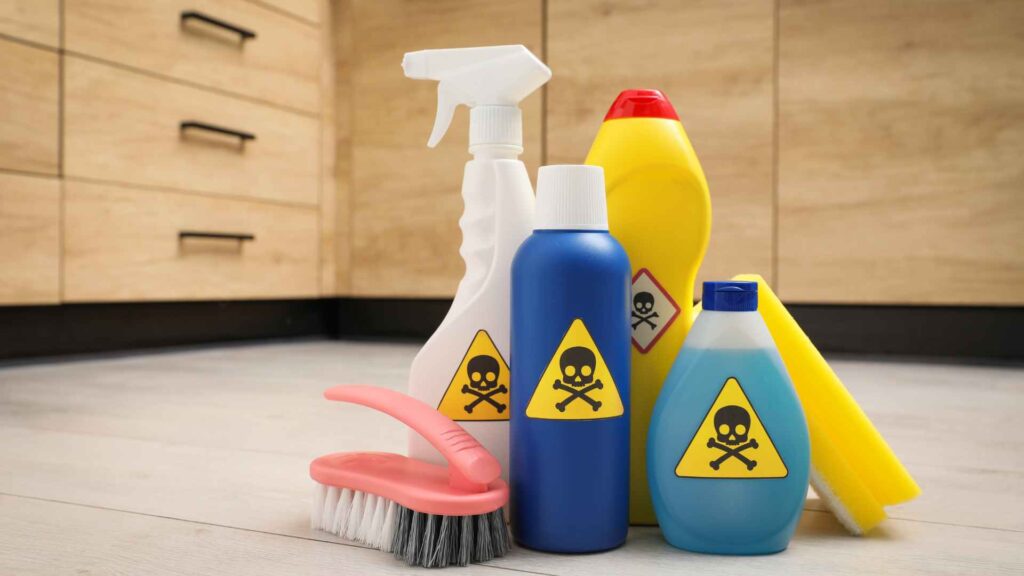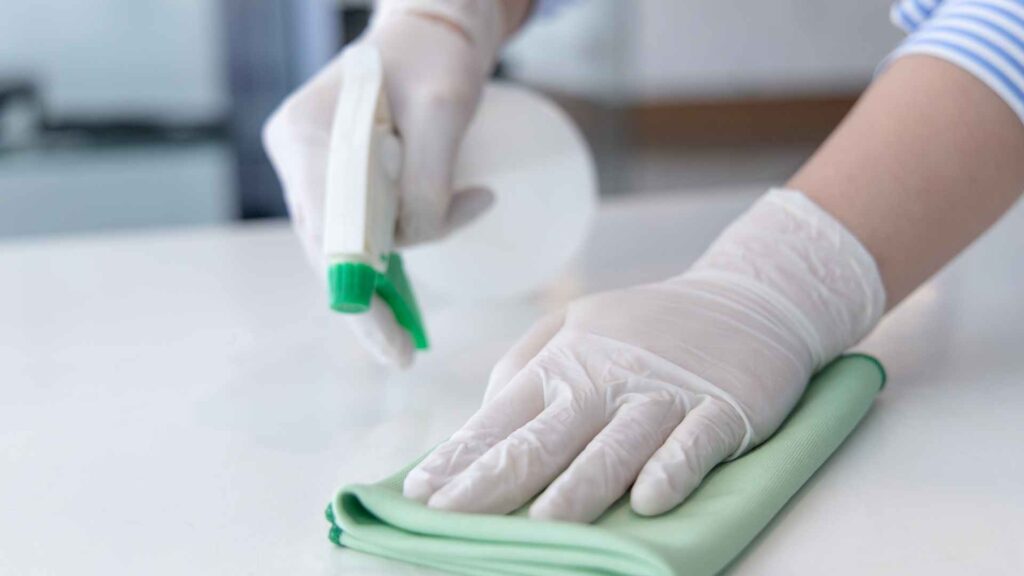Table Of Content
ToggleI’m a pest control expert, and I know how aggravating fleas can be in your home. Fleas not only cause itchy bites for you and your pets, but they can also transmit diseases. Finding a quick flea treatment for your house is important, but it’s just one part of the solution.
To truly eliminate fleas, you’ll need to treat both your pets and your house. I can help you with both! Let’s discuss the best course of action to get your home flea-free.
If you suspect fleas have invaded your home, keep an eye out for these common signs:
On your pets:
In your house:
Secure your home with the right pest control plan. Find out how.

Disclaimer: Before using any product, especially with young pets, pregnant pets, or pets with existing health conditions, consult your veterinarian for personalized recommendations.
Popular brands like Advantage II Flea Spray and Frontline Plus, Flea and Tick Spray offer quick knockdown of adult fleas and often kill flea eggs and larvae for weeks.
Always follow the product instructions carefully. Typically, you’ll apply the spray directly to carpets, furniture, pet bedding, and along baseboards, paying close attention to areas where your pet frequents.
For large infestations or hard-to-reach areas, foggers like Hot Shot Fogger can be a good option.
Important Reminders: Ensure everyone (including pets) is out of the house during treatment and for several hours afterwards as instructed by the product label. Upon returning, open windows for thorough ventilation.
Aprehend Flea Treatment and Program, Flea Treatment are popular IGR options. These disrupt the flea life cycle by preventing flea eggs and larvae from developing into adulthood.
This helps break the flea breeding cycle and prevent future infestations. IGRs come in various forms like sprays and carpet treatments. Follow the specific application instructions for your chosen product.
Trapper, Sticky Flea Traps and Victrix, Flea Traps use light, warmth, or CO2 to attract adult fleas, trapping them on a sticky surface.
Flea traps are most effective when used alongside other flea control methods to monitor flea activity and trap adult fleas.
Boric acid should only be used as a last resort due to potential health risks to pets and humans if ingested. Consider the other options listed above before resorting to boric acid.
If absolutely necessary, only use boric acid in cracks and crevices, following product instructions meticulously.
Ensure the treated areas are completely inaccessible to pets and children. Vacuum thoroughly after a few days to remove any remaining boric acid powder.
Explore your pest control options for a safer home today.

While not always a complete solution for a full-blown infestation, natural remedies can be a helpful addition to your flea control plan, particularly for prevention or for mild cases. Here are a couple options to consider:
Essential Oils for Flea Repellents:
Certain essential oils have properties that repel fleas. It’s important to remember that some essential oils can be toxic to pets, so be sure to do your research and dilute them properly before using. Here are a few commonly used options:
Homemade Flea Spray Recipes:
There are several recipes for homemade flea sprays circulating online. Keep in mind that these may not be as effective as commercial flea treatments and may need to be reapplied more frequently. Here’s a basic recipe to consider, but be sure to research any recipe you choose to ensure it’s safe for your pets:
Important Note: Before using any essential oils or homemade sprays on your pet, consult with your veterinarian to ensure they are safe for your pet’s age and health.
Tailor your pest management strategy. Start now.

Even after you’ve successfully eliminated the fleas, it’s important to stay vigilant to prevent them from returning. Here’s what you should do:
By following these post-treatment measures, you can significantly reduce the chances of fleas returning and keep your home flea-free.
Choose the best pest control frequency. Get expert guidance.

As a pest control expert, I’ve seen many flea infestations, and while DIY methods can be helpful for mild cases, there are situations where calling a professional is the best course of action. Here are some signs that professional help might be necessary:
Signs of a Severe Infestation:
The Infestation Persists:
You Have Concerns About Using Pesticides:
You Have a Large or Heavily Carpeted Home:
Ready to fumigate your home? Contact us today for a customized quote!

As a pest control expert, I’ve seen firsthand the importance of swift action when dealing with fleas. These pests multiply rapidly, so a quick and multi-pronged attack is essential for success. Treat your pets with a veterinarian-recommended flea medication and clean your home thoroughly by vacuuming carpets, furniture, and pet bedding regularly. Wash pet bedding and soft furnishings in hot water. Consider professional cleaning, especially for severe infestations.
Remember, the sooner you take action, the easier it will be to eradicate fleas from your home and prevent them from returning. If you’re unsure where to start, your veterinarian is a valuable resource for guidance and recommendations. By following these steps and consulting with your vet, you can win the war on fleas and create a pest-free environment for yourself and your pets.
To quickly eliminate fleas from your house, start by vacuuming thoroughly and washing bedding in hot water. Use indoor flea spray on carpets and furniture, and treat pets with vet-approved products. Consider using flea traps for added effectiveness.
For urgent flea removal, vacuum all surfaces, wash bedding in hot water, and use fast-acting flea spray on carpets and furniture. Treat pets promptly with vet-recommended products and consider flea bombs for severe infestations.
To remove fleas from your bed swiftly, wash bedding in hot water, vacuum the mattress thoroughly, and use diatomaceous earth or baking soda. Ensure pets are treated to prevent re-infestation.
Your trusted pest control experts in Southern California. Keeping your neighborhood pest-free!